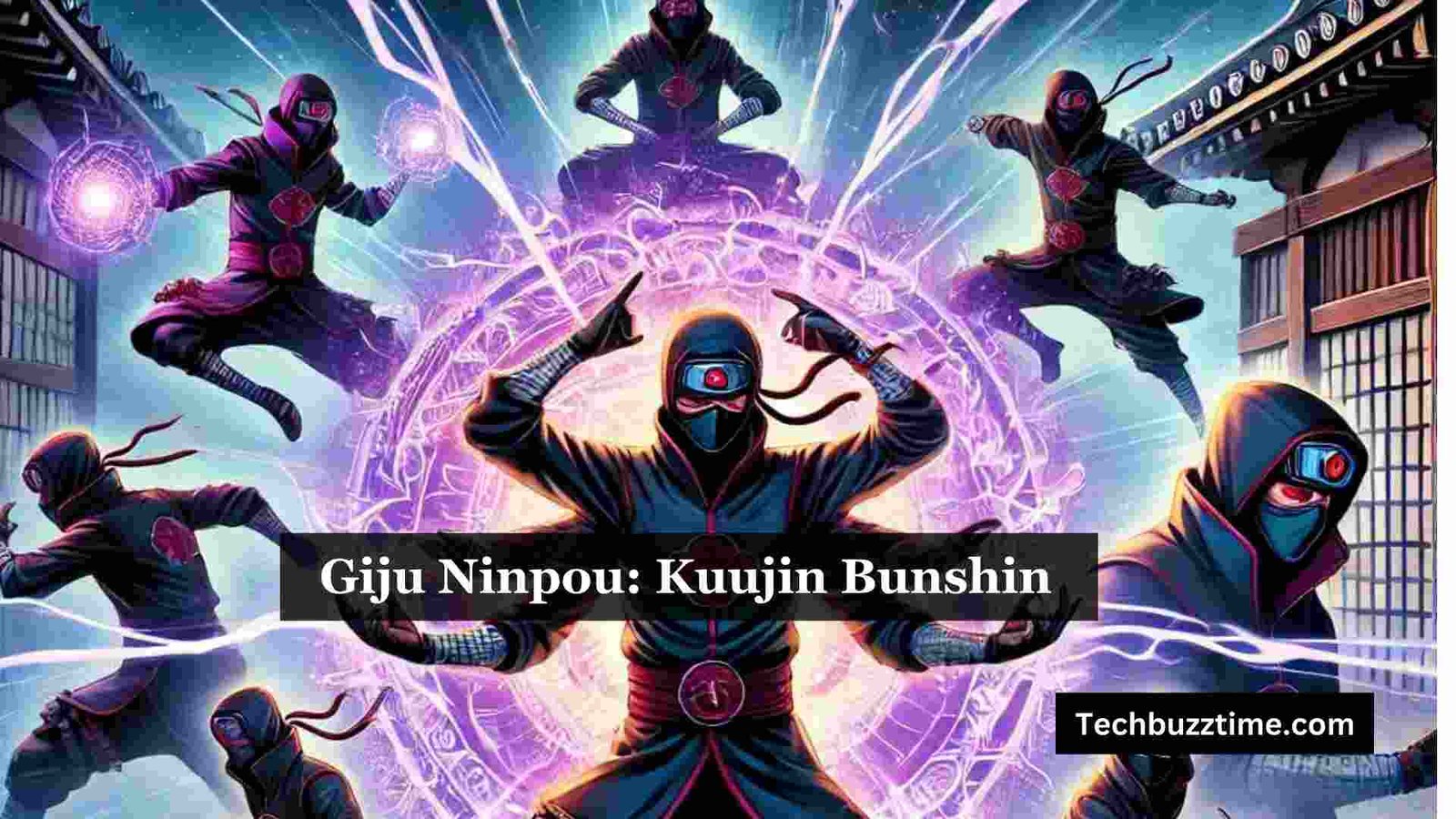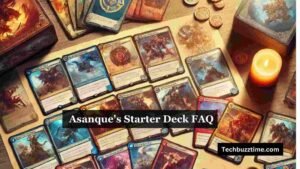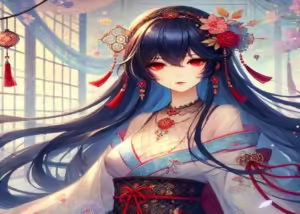Introduction: Giju ninpou: kuujin bunshin, or ‘shadow clones’ is a technique used and vital in ninjutsu. This technique enables a ninja to produce several dummies of himself which could be helpful in battle, spying as well as to confuse the enemies. Knowledge about this technique enhances one’s general comprehension of ninjutsu and the realm of its application including pop culture references and enthusiast-related writings.
What is Giju Ninpou: Kuujin Bunshin?
Giju ninpou: sometimes it is translated as cloning but it was just a meaning because it denotes the ability to create kuujin bunshin or shadow clones. Contrary to the bunshin no jutsu techniques which create ethereal clones, the shadow clone technique creates solid clones that can even engage with the surroundings. This is to stress the difference in ascertaining the best application of the technique in battle or missions.
The Mechanics of Kage Bunshin no Jutsu
In Kage Bunshin no Jutsu, instead of replicating oneself physically, a ninja distributes his or her chakra into clones that are created. All the clones are given and possess their consciousness and the clones have their quality of FREE-WILL. It also enables the development of strategies when fighting which are complex and strategic. For instance, one of the clones can be used to launch an attack while the other one is spying or performing any other function. The advantage of this technique makes it a favorite among many ninjas.
Giju Ninpou in Fanfiction and Popular Culture
The concept of Giju ninpou: Because shoujo-ai is mainly fictional, there are many kuujin bunshin-inspired fanfictions and adaptations. Thus, shadow clones are an interesting technique that is still frequently developed by writers, who look for new possibilities to use it with the help of examples of various situations, where characters employ this technique. These examples assist the fans in relating to the original work, appending to the setting, and giving a creative angle to the examined methods.
Comparing Bunshin no Jutsu vs Kage Bunshin
This is because the two taijutsu techniques, bunshin no jutsu and Kage Bunshin, are commonly discussed by the fans. Thus the main disparity is a clone’s tangibility. Though the former can only create ghost-like images, the latter produces clones in substance that can act on their own accord. It can also have a great influence on a ninja when carrying out fights. Analyzing these differences improves appreciation of the fact that ninjutsu is a more complex system than is depicted in fictional portrayals.
The Meaning of Bunshin
The term for “bunching” is relative to the English language as a clone or copy. Although it is a very broad definition, it covers a broad cross-section of the techniques within the discipline of ninjutsu. Thus, understanding the meaning of bunshin allows the fans to take into consideration the variety of uses and overtones that can be attributed to cloning methods present in the Naruto series.
Exploring Bunshin FFXIV
In the context of Final Fantasy XIV (FFXIV), there are different types of bunshin present in one way or another. Players come across powers such as ninjutsu cloning and illusionary tactics based on the show’s application of cloning autos. This crossover showcases the influence of Giju ninpou: few people know or understand the concept of kuujin bunshin outside of gaming, therefore providing an example of it in detail to show how it has affected both gaming and storytelling.
The Suna Bunshin Technique
Another technique similar to the bunshin technique is the Suna Bunshin in which clones are made using sand. This technique demonstrates the versatility of ninjutsu, enabling users to manipulate their environment in any way they find suitable. The Suna Bunshin explains how changing individual factors can affect the performance as well as the manner of cloning approaches.
Conclusion: The Enduring Legacy of Giju Ninpou: Kuujin Bunshin
The art of Giju ninpou: Even today kuujin bunshin is still a topic that is of high interest among ninjutsu practitioners. The use of comics in conflict, narrative, and low-cost appropriation demonstrates the continuity of comics. Thus, it would be possible to note that, regardless of fans’ further advancements in this technique, it would continue to flourish in both historical and contemporary formats. Understanding Giju ninpou: Kuujin bushing adds to the enjoyment of interacting with the world of Naruto and all the different jutsu that exist.
FAQs About Giju Ninpou: Kuujin Bunshin
“Delve into the most frequently asked questions to deepen your understanding of the Giju Ninpou: Kuujin Bunshin technique, its applications, and its impact on both fictional narratives and practical ninjutsu.”
Q1. What is Giju Ninpou: His REAL NAME is Kuujin Bunshin.
Giju ninpou: kuujin bunshin or the art of shadow clones enables a ninja to produce bodacious duplicates of himself, hence being able to perform different stunts simultaneously.
Q2. What is the major difference between Kage Bunshin no Jutsu and the regular Bunshin no Jutsu?
Kage Bunshin no Jutsu generates actual copies, which are viable like any normal person, while other bunshin no Jutsu generates holographic images, which cannot be touched or felt.
Q3. Can shadow clones obtain information?
Indeed, shadow clones are self-sufficient and, thus, are effective when it comes to data assessment, as in reconnaissance.
Q4. How much chakra does one have per Kage Bunshin duplicate?
Kage Bunshin is a jutsu whereby a ninja splits his/her chakra among different clones, resulting in weakened clones. All clones employ a portion of the actual ninja’s chakra in their creation.
Q5. Why is Giju Ninpou famous in fanfiction?
Giju ninpou: kuujin bunshin provides almost an infinite number of options for scripts to further reveal the final plot and relationships between characters.
Q6. What does the term “bunshin” mean?
The term “Bunshin” means clone or copy and this is another type of cloning in ninjutsu.
Q7. What is the Suna Bunshin technique?
Suna Bunshin uses sand to make clones, highlighting the variety of cloning in ninjutsu, differentiating it from elements such as water used by Kirigakure.
Q8. Are there any games that include Giju Ninpou as their character?
Indeed, there are representations in games such as Final Fantasy XIV, where clones or illusion types can be created, referring to traditional ninjutsu.
Q9. During fight scenes, is it possible to use shadow clones?
Absolutely! Shadow clones can fight, protect, and strategize during battles, which is very important in combat scenarios.
Q10. What role does Giju Ninpou play in the events of Naruto?
Giju ninpou: kuujin bunshin helps increase the depth of the battle as well as the depth of specific characters, enhancing the overall narrative.






Be First to Comment